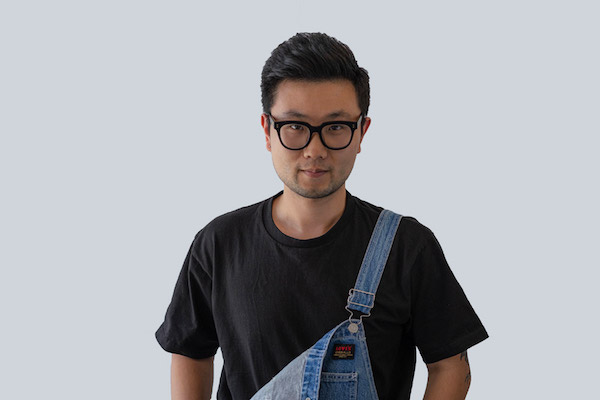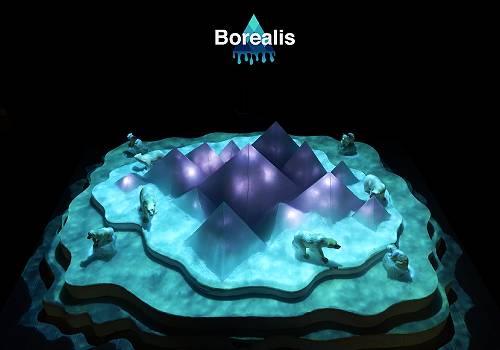
He Zhu
1. Please give us a brief bio of yourself and your background.
Hi, my name is He Zhu. As a User Experience Designer, I create environments where science, art, engineering, and design come together harmoniously to create seamless and enjoyable customer experiences. I have used 'design thinking' to better understand the challenges of designing and building products at scale, across disciplines.
2. What made you become/why did you choose to become a product designer?
One reason that draws me to user experience is that It's all about making sense, everything we do as a designer is to seek the connection between users and their dilemmas and figure out how we can help them.
3. Tell us more about your business/company, job profile, and what you do.
Currently, I am a Senior UX Designer on the Corporate and Investment Banking team at JPMorgan & Chase. I focus and lead on a platform called Navigator, which is the unified Payment Servicing desktop platform to streamline the customer service experience. We are trying to unify and understand customer data to derive insights that power personalized experiences.
Before joining the company, I worked in the sleep and respiratory care team at Philips. I focus and lead on a platform called CO, which is a care management system enterprise software. Care Orchestrator is a cloud-based application that connects home care providers, physicians, and payers with patients
4. What does “design” mean to you?
I believe that UX design encompasses a holistic approach that blends creativity, empathy, and problem-solving to craft meaningful and impactful user experiences.
5. What’s your favorite kind of design and why?
My favorite design is clean and solves the user's problem which is Designing with a deep understanding of users' needs, behaviors, and preferences. It involves conducting user research, creating personas, and empathizing with users throughout the design process.
6. To you, what makes a “good” design?
A good design should address users' pain points and solve their problems through intuitive and efficient interfaces. This involves identifying problems in existing designs or conceptualizing new solutions from scratch.
7. Describe your design style and its main characteristics.
With my background in Interactive Design and Motion Media Design. I think balancing functional elements with visual appeal creates an aesthetically pleasing interface. This involves considerations such as color theory, typography, and visual hierarchy. I value the process of understanding the right problem and patience in digging into the key insight behind each dilemma. I am always ready to create a better solution and hold unbiased empathy for users.
8. Tell us about your design process.
In my field of interactive design, I mainly focus on training in human-centered design. Projects are more about doing research and finding and solving the right problems. The objects are more about web and mobile applications contributing to multiple digital user experience engagements and translating conceptual ideas into exceptional design solutions.
9. Do you think your country and its cultural heritage has an impact on your design process?
Cultural heritage plays an important role in shaping a UX designer's perspective and approach to design. Embracing diversity and cultural sensitivity can enrich the design process is important to me. Cultural norms and behaviors vary across regions, affecting how users interact with digital products. Designers with an understanding of their country's cultural context can better tailor user experiences to meet the needs and expectations of their target audience.
10. Congratulations! As the winner of the 2024 NY Product Design Awards, what does it mean to you and your company and team to receive this award distinction?
Winning the 2024 NY Product Design Awards is a significant achievement that fuels our passion for design and reaffirms our commitment to excellence. It's a time of celebration and pride for my team, and we are grateful for the recognition and support.
11. Can you explain a bit about the winning work you entered into the 2024 NY Product Design Awards, and why you chose to enter this project?
Borealis, an interactive installation, reveals the accelerated melting of glaciers due to global warming. The concept aims to illustrate the environmental impact of thoughtless human actions. It serves as a poignant reminder that individuals must be aware of the consequences of their destructive behaviors. Borealis calls for reflection and awareness, urging a collective responsibility to address the pressing challenges posed by climate change.
12. What was the biggest challenge with this project?
1. Management Vision & Goals to understand the purpose and overall vision. Short-term/long-term goals.
2. Plan or budget for this project
3. Workflow and communication. How do we communicate within our team? Tool? Meeting cycle? Timeline?
4. Design & Tech. Technical requirements will influence the design.
13. How has winning an award developed your practice/career?
Winning an award provides external validation of a designer's skills, creativity, and expertise. Building relationships within the industry can lead to future projects, partnerships, and career advancement. It represents a milestone in my professional journey and can propel me to new heights of success in the design industry.
14. What are your top three (3) favorite things about our industry?
1. Creativity 2. Collaboration 3. Variety
15. What makes your country specifically, unique in the design industry?
I think different countries may specialize in specific areas of design based on their industries and economic priorities which will impact how users interact with digital products. Designers with an understanding of their country's cultural context can better tailor user experiences to meet the needs and expectations of their target audience. Each country has its rich cultural heritage, traditions, and aesthetics that influence its design industry.
16. If you were a student entering this industry or an aspiring NY Product Design Awards submitter, what advice would you give them?
1. Gain practical experience, and seek opportunities to apply your knowledge and skills through internships, freelance projects, or personal projects.
2. Build a Strong Foundation: Focus on developing a solid understanding of design principles, user experience fundamentals, and design tools.
3. Seek feedback and iterate: Don't be afraid to seek feedback on your work from peers, mentors, or industry professionals.
17. What resources would you recommend to someone who wants to improve their skills in the design industry?
Improving skills in the design industry requires a combination of education, practice, and staying up-to-date with industry trends.
1. Online courses and tutorials: Google UX design. 2. Don't Make Me Think by Steve Krug: A classic book on web usability and user experience design. Don Norman's "The Design of Everyday Things" explores the principles of design and usability in everyday objects.
18. Tell us something you have never told anyone else.
I am a positive and self-motivated person who prefers to work as part of a team where everyone is working towards the same goal. Usually, I play the role of coordinator and facilitator in a team. During the start-up phase of a project, I proactively suggest ideas, set goals, and work collaboratively with the team to develop workable plans.
19. Who has inspired you in your life and why?
Steve Jobs was a visionary entrepreneur and innovator who co-founded Apple Inc. His relentless pursuit of excellence, focus on simplicity and user experience, and ability to anticipate and shape consumer desires have left an indelible mark on the world of technology.
1. Innovative Products.
2. Visionary Leadership.
3. Design Aesthetic

